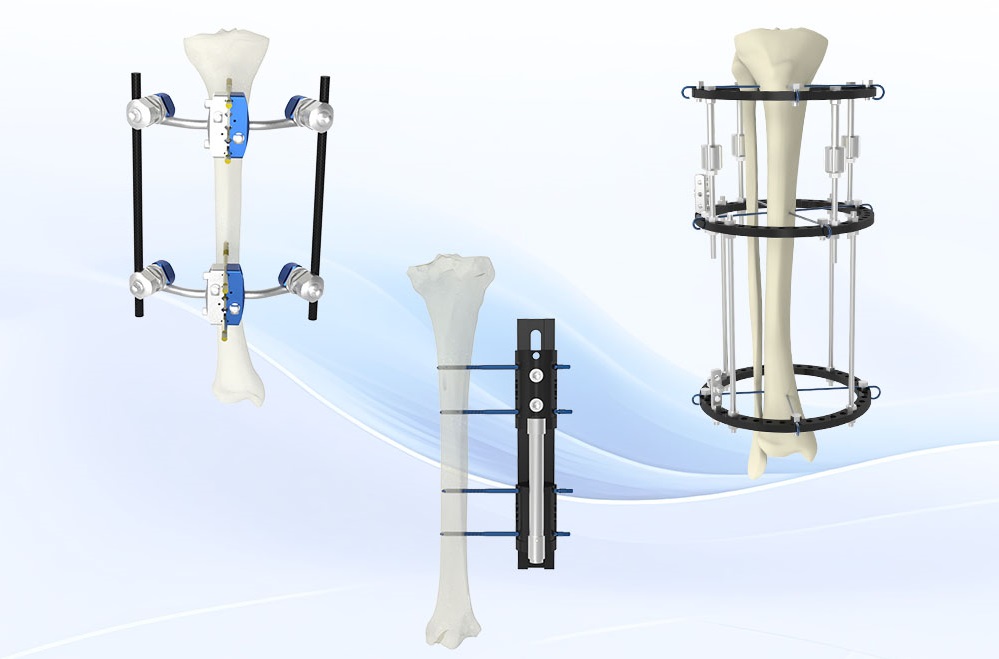Orthopedic External fixation is a special orthopedic technique used to stabilize and support fractured bones or joints from outside the body. External fixation set is particularly effective when internal fixation methods such as steel plates and screws cannot be used due to the nature of the injury, the overall health condition of the patient, or the need for frequent contact with the affected area.
Understanding external fixation system
An external fixator device consists of rods, pins, and clips that are attached to the bone through the skin. This external device holds the fracture in place, keeping it properly aligned and stable while it heals. External fixators are usually made of lightweight materials such as aluminum or carbon fiber and are easy to handle and can be adjusted as needed.
The main components of external fixation in orthopedics include needles or screws, connecting rods, pliers, etc
Application of external fixation system
External fixation is commonly used in a variety of orthopedic scenarios, including:
Fractures: It is particularly useful for complex fractures, such as those involving the pelvis, tibia, or femur, which may not be amenable to traditional internal fixation.
Infection Management: In open fractures or situations where there is a risk of infection, external fixation allows easier access to the wound site for cleaning and treatment.
Bone lengthening: External fixators can be used in procedures to lengthen bones, such as distraction osteogenesis, in which bones are gradually pulled apart to encourage new bone growth.
Joint stabilization: In cases of severe joint injuries, external fixation can provide stability while allowing a certain degree of motion.
There are several advantages to using ortopedic external fixator in treatment:
Minimally invasive: Since the medical external fixator is applied externally, it causes less damage to surrounding tissues compared to internal fixation methods.
Adjustability: The external fixator orthopedic can be adjusted postoperatively to accommodate changes in the patient’s condition or to correct alignment problems.
Reduced risk of infection: By keeping the surgical site accessible, healthcare providers can more effectively monitor and manage any potential infections.
Promote rehabilitation: Patients can usually start rehabilitation exercises faster with external fixation because this method allows a certain degree of mobility while maintaining stability.
Post time: Apr-29-2025

